![]()
![]()
![]()
Use LEFT and RIGHT arrow keys to navigate between flashcards;
Use UP and DOWN arrow keys to flip the card;
H to show hint;
A reads text to speech;
16 Cards in this Set
- Front
- Back
|
The outer bailey
|
The first courtyard inside the outer walls of the castle.
|
|
|
The inner bailey
|
The inner courtyard of a castle. It was protected by two walls.
|
|
|
The wall or curtain
|
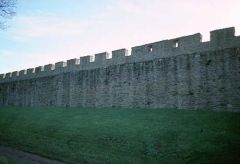
Surrounded the courtyard of the castle. Strongly built, it was not uncommon for the castle's walls to be ten or more feet in thickness.
|
|
|
The keep
|
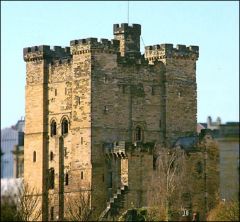
It was known in French as the donjon. It was the strongest and most heavily fortified part of the castle as it was designed to be the last line of defense. Keeps were sometimes built round, sometimes square. Square keeps made nicer rooms, but round keeps were easier to defend. The keep usually housed the owner of the castle and his family. In it the great hall was often located. The great hall was the heart of the castle. It was used for family dinners, banquets, games, dancing, entertainment and sometimes a courtroom.
|
|
|
The drawbridge
|
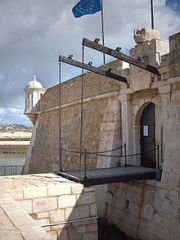
It was a bridge which could be raised or lowered. It was usually located over a moat.
|
|
|
Parapets
|
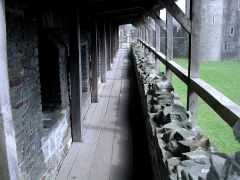
Low walls around the top edge of a tower or castle wall.
|
|
|
Corbels
|
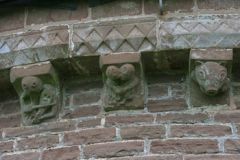
Stone projections in the walls which acted like brackets to support parapets.
|
|
|
Machicolations
|
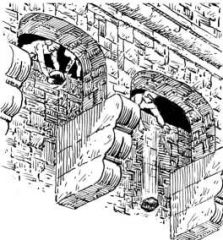
They were the reason parapets were built. They were holes in the parapets used for dropping all kinds of things, such as boiling oil, hot water, stones, etc.
|
|
|
The moat
|
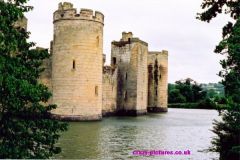
It was a ditch around the castle. It was usually filled with water.
|
|
|
The barbican
|
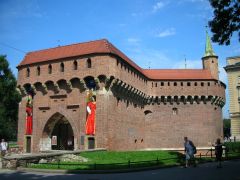
It was a forward gate of the castle located before the main gate. It offered extra protection since the weakest part of the castle was considered to be the gate.
|
|
|
The postern gate
|
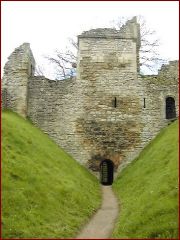
It was a back gate. It was supposed to be a secret, but oftentimes was not. The gate was used for attacking and surrounding the enemy outside the castle, as an escape, or for the coming and going of scouts and spies.
|
|
|
Arrow-loops
|
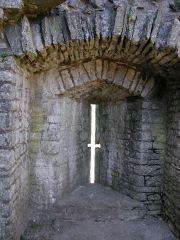
They were narrow openings in the castle's towers through which archers fired their arrows on the enemy below.
|
|
|
The portcullis
|

It was the main gate to the castle. It was made of very heavy wood and was reinforced with iron grating. Like the barbican, it could be raised or lowered for protection of the people inside.
|
|
|
The gatehouse
|
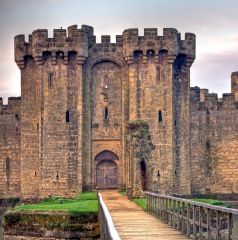
The living quarters over the main gate of the castle. As time went on it became heavily fortified and very important. Sometimes the owner of the castle chose to live there.
|
|
|
Murder holes
|
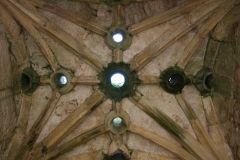
Holes in the ceiling just after the front gate. The holes were used for dropping large stones on attackers who got through the gate.
|
|
|
Rocky ledges
|
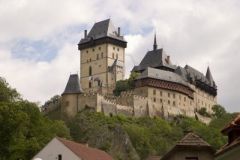
They were important for the placement of castles. Castles built on rock could not be seized by tunneling.
|

